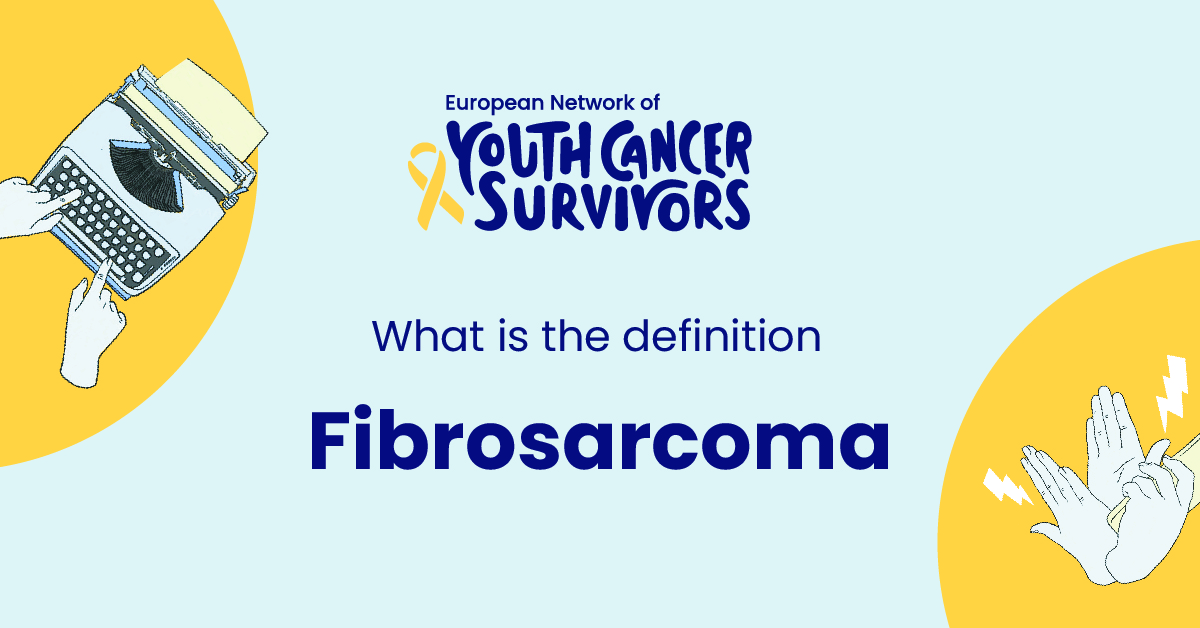
Fibrosarcoma is a rare but severe form of cancer that primarily initiates from the fibrous tissues of bones and muscles. It is associated with the broader class of cancers known as sarcomas, which originate from connective tissues.
Defining Fibrosarcoma
Fibrosarcoma generally presents as a hard, mass or lump of cells that displays abnormal and aggressive growth patterns. These tumours invade and destroy surrounding structures, causing significant pain and discomfort to affected individuals.
A Look at Sarcomas: Understanding the Context
Sarcomas, inclusive of fibrosarcomas, are relatively rare, constituting less than 1% of adult malignancies. Their rarity often leads to late diagnoses, necessitating a greater understanding and awareness of these conditions among the general public and healthcare providers.
Common Myths and Misconceptions about Fibrosarcoma
It is a common myth that fibrosarcoma only affects older adults. Contrarily, it can occur at any age, including infancy and childhood, although its prevalence is higher in middle-aged and older adults. Another misconception is linking fibrosarcoma to lifestyle factors like diet and exercise. While these elements are crucial for overall health, their direct correlation to fibrosarcoma is not evident.
Anatomical Exploration of Fibrosarcoma
Combating Fibrosarcoma: Where it Begins
Fibrosarcoma begins in the body’s fibrous tissues, commonly those sandwiched between bones and muscles. These include tendons, ligaments, fasciae, and the periosteum, amongst others.
Analyzing the Tumors: Understanding the Formations
The tumors in fibrosarcoma display interconnected bundles of immature fibroblasts, the cells responsible for producing connective tissues. These tumors can range in size and often metastasize, or spread, to surrounding and distant parts of the body.
Get to know us better
If you are reading this, you are in the right place – we do not care who you are and what you do, press the button and follow discussions live

The Affected Regions: An Overview
While fibrosarcoma can potentially develop anywhere in the body, some regions are more predominantly affected. These include the long bones of the arms and legs, the spine, and the mandible or lower jaw.
What are the causes of Fibrosarcoma?
Delving into the Genetics: Protein Anomalies and Predispositions
Genetic anomalies, particularly the alterations of specific proteins, are often implicated in the development of fibrosarcoma. Mutations in the COL1A1 gene, encoding the alpha-1 chain of type 1 collagen, is one such example.
The Impact of Environmental Factors
Environmental factors such as radiation exposure might increase the risk of fibrosarcoma development. However, more research is required to definitively establish such relationships.
Injury and Other Triggering Factors of Fibrosarcoma
Various factors could potentially increase the risk of developing fibrosarcoma, including previous injuries leading to chronic inflammation. However, these are not causative factors but merely associations requiring further investigation.
Symptoms and Diagnosing Fibrosarcoma
Recognizing Fibrosarcoma: Common Symptoms
Fibrosarcoma often presents as a hard, painless lump. As it progresses, it might cause pain or swelling, affect normal functioning, or cause systemic symptoms like unexplained weight loss and fatigue.
Diagnostic Procedures for Identifying Fibrosarcoma
The diagnostic process involves careful medical history evaluation, physical examination, and different testing modalities. These include imaging techniques like X-rays, CT scans, MRIs, and PET scans.
The Crucial Role of Radiological Imaging and Biopsies
Radiological imaging is crucial for visualizing the tumor and its surrounding structures, while biopsies confirm the diagnosis by examining the tissue under a microscope. In several scenarios, they can also provide information about the tumor’s grade(degree of abnormality), helping in treatment planning.
Treatment Options for Fibrosarcoma
Surgery: The First Line of Defence
The primary treatment for most cases of fibrosarcoma is surgery. The goal is to remove the entire tumor along with a safety margin of healthy tissue to minimize the chances of recurrence.
A Crucial Role for Radiotherapy
Radiotherapy uses high-energy radiation to kill cancer cells. It is often used after surgery to kill any remaining cancerous cells or in palliative scenarios to manage symptoms.
Chemotherapy and Targeted Therapy Options
Chemotherapy utilizes drugs to kill cancer cells throughout the body and is often used if there’s a high risk of recurrence or metastasis. More recently, targeted therapies exploiting the genetic anomalies of cancer cells are being increasingly utilized.
Future Perspectives and Research on Fibrosarcoma
Latest Advances in Treating Fibrosarcoma
Newer approaches to fibrosarcoma treatment, including targeted therapies and biologics, are showing promise in recent studies. For instance, therapies targeting the CDK4 pathway, which is often disrupted in sarcomas, are currently under investigation.
The Potential of Gene Therapy and Immunotherapy
Gene therapy and immunotherapy, intended to use the body’s immune system to fight cancer, represent future directions in fibrosarcoma treatment. However, these are still in the research and trial stages of development.
The Role of Clinical Trials in Fibrosarcoma’s Future
Clinical trials are integral to advancements in fibrosarcoma treatment. They offer an avenue to test newer approaches, paving the way for improvements in survival and quality of life for affected individuals.
Conclusion
The Importance of Awareness and Early Diagnosis
Increasing awareness, early detection and a multi-disciplinary approach to treatment are integral to improving outcomes. Fibrosarcoma, like several other cancers, can only be cured when caught and treated early.
Coping with Fibrosarcoma: The Importance of Support Systems
Coping with fibrosarcoma diagnosis and treatment is challenging, and a strong support system of family, friends and medical professionals is crucial. Numerous support groups, both online and offline, can help affected individuals and their families navigate through the difficult journey.
Frequently Asked Questions
- What is Fibrosarcoma and how common is it?
Fibrosarcoma is a malignant, aggressive form of cancer originating from fibrous tissues. It is rare, making up less than 1% of adult malignant tumors.
- Who is most at risk of developing Fibrosarcoma?
Fibrosarcoma can affect individuals of any age, although its incidence is higher amongst middle-aged and older adults. Those with certain genetic mutations or exposure to radiation might be at an increased risk.
- What are the potential symptoms of Fibrosarcoma?
Common signs include a painless, hard mass that may later cause pain and swelling. Systemic symptoms like unexplained weight loss and fatigue might also be present in advanced stages.
- How can Fibrosarcoma be diagnosed?
Diagnosis involves a careful medical history, physical examination, and a variety of tests ranging from imaging modalities like X-rays and MRIs to tissue biopsies.
- What treatment options are available if diagnosed with Fibrosarcoma?
Treatment depends on the tumor’s size, location, and grade, and it often involves surgery, followed by radiotherapy and chemotherapy. Emerging therapies targeting specific genetic changes in the tumor are also being explored.

















Comments
Thank you. Comment sent for approval.
Something is wrong, try again later